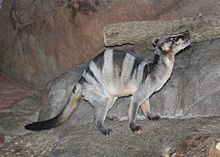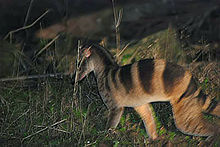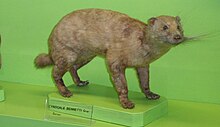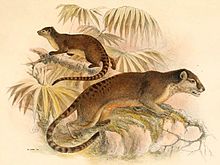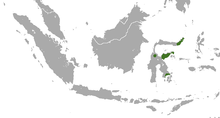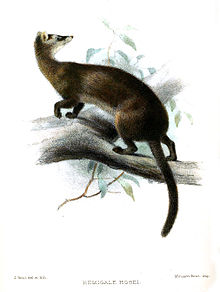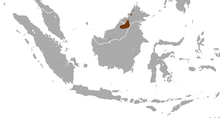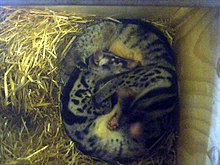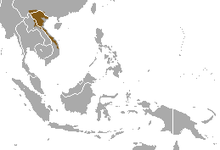
Viverridae is a family of small to medium-sized, feliform mammals. The viverrids comprise 33 species placed in 14 genera. This family was named and first described by John Edward Gray in 1821. Viverrids occur all over Africa, southern Europe, and South and Southeast Asia, across the Wallace Line. Their occurrence in Sulawesi and in some of the adjoining islands shows them to be ancient inhabitants of the Old World tropics.

The otter civet is a semiaquatic viverrid native to Thailand, Malaysia, Indonesia and Brunei. It is listed as Endangered because of a serious ongoing population decline, estimated to be more than 50% over the past three generations, inferred from direct habitat destruction, and indirect inferred declines due to pollutants.

The banded palm civet, also called banded civet, is a viverrid native to Myanmar, Peninsular Malaysia, peninsular Thailand and the Sunda Islands of Sipura, Sumatra and Borneo. It is listed as Near Threatened on the IUCN Red List because of its large geographic and elevation range and tolerance to some habitat disturbance.

The small-toothed palm civet, also known as the three-striped palm civet, is a palm civet native to dense forests of Southeast Asia, from the Assam district of India to Indochina and the Malay Peninsula and on Sumatra, Bangka, Java, Borneo, and numerous small nearby islands of Indonesia.

The Viverrinae represent the largest subfamily within the Viverridae comprising five genera, which are subdivided into 22 species native to Africa and Southeast Asia. This subfamily was denominated and first described by John Edward Gray in 1864.

Paradoxurinae is a subfamily of the feliform viverrids that was denominated and first described by John Edward Gray in 1864. Pocock subordinated the genera Paradoxurus, Paguma and Arctictis to this subfamily.
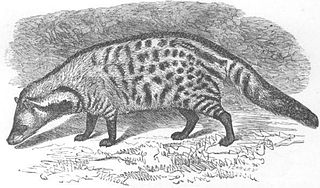
Viverra is a mammalian genus that was first nominated and described by Carl Linnaeus in 1758 as comprising several species including the large Indian civet. The genus was subordinated to the viverrid family by John Edward Gray in 1821.

Urva is a genus comprising the Asian mongooses within the mongoose family Herpestidae. Species in the genus were formerly classified in the genus Herpestes, which is now thought to comprise exclusively African mongooses; phylogenetic evidence indicates that the Asian mongooses form a monophyletic group and had an Asian common ancestor. Urva forms a clade with Xenogale and Atilax, while Herpestes forms a clade with all other African mongoose species.
